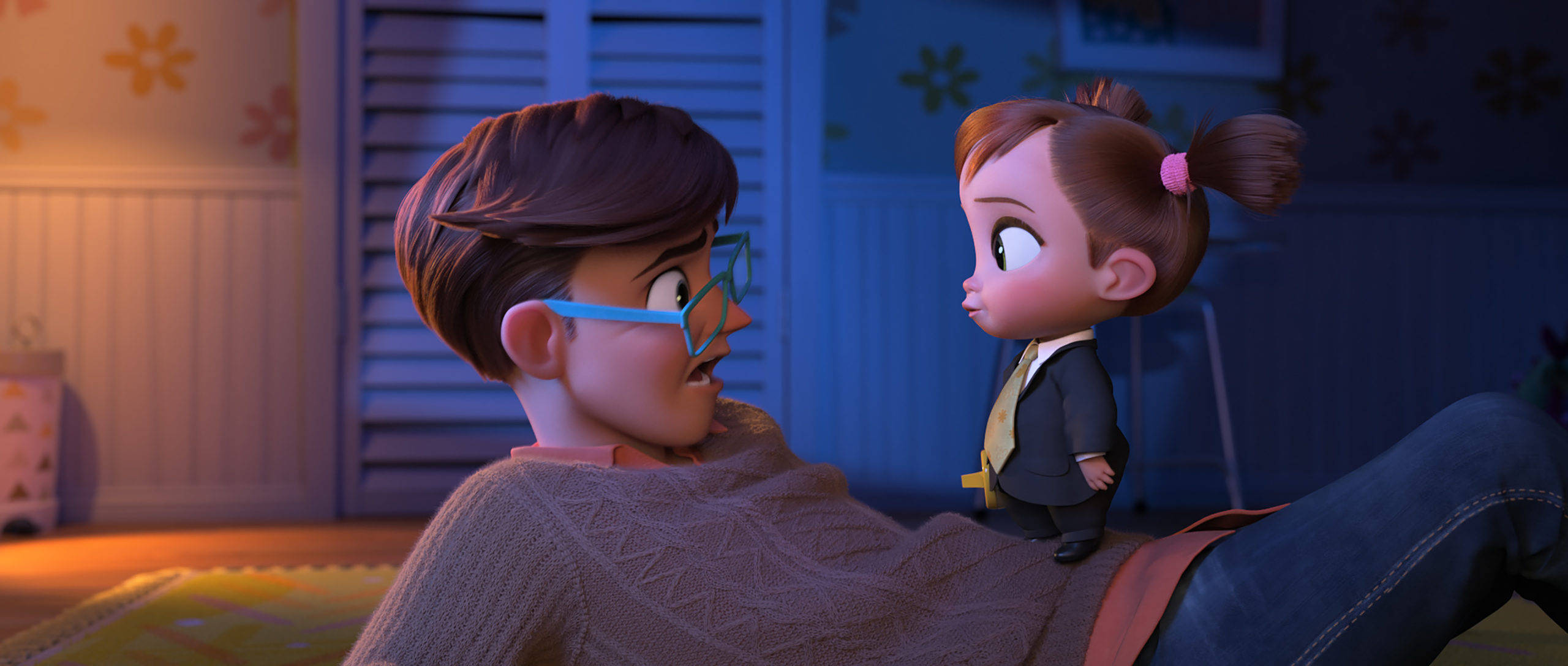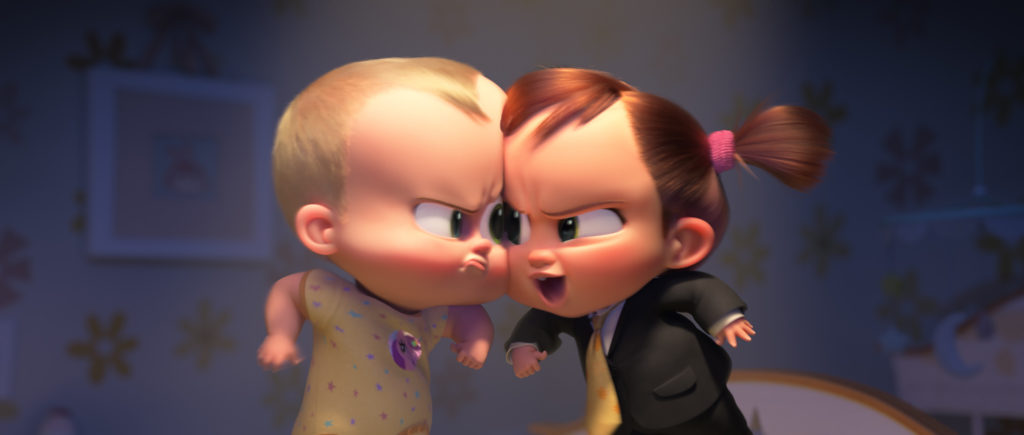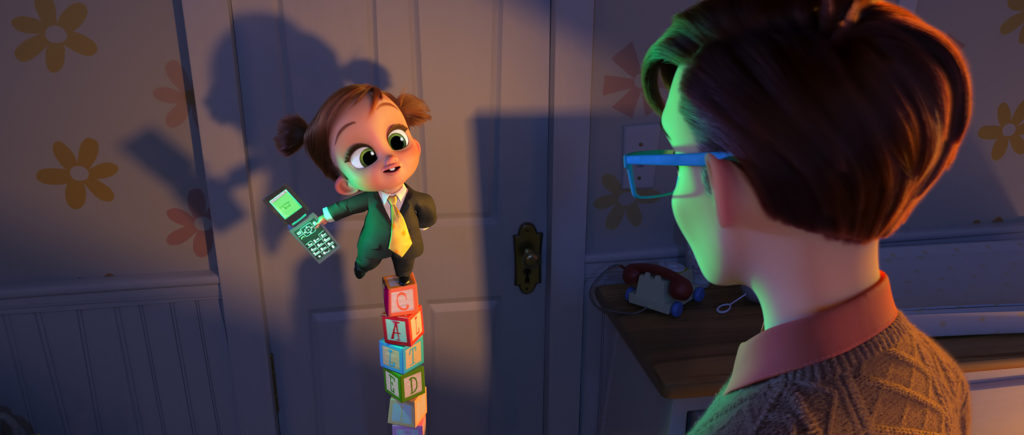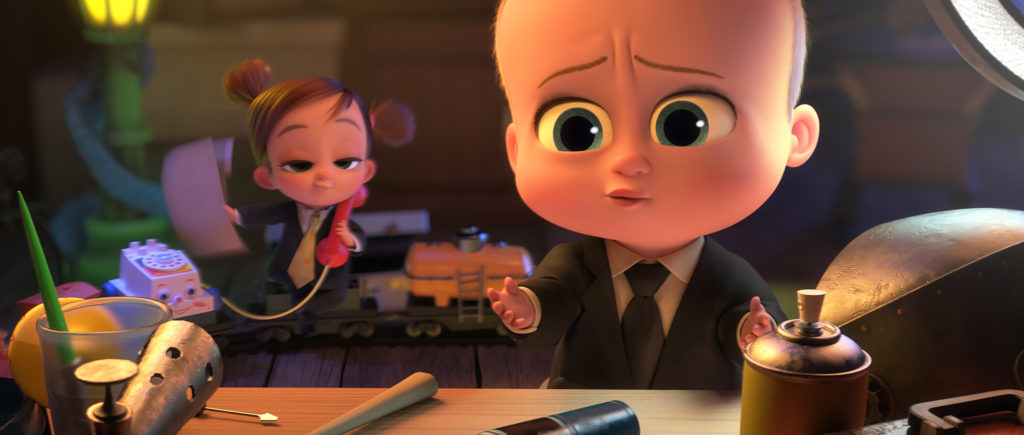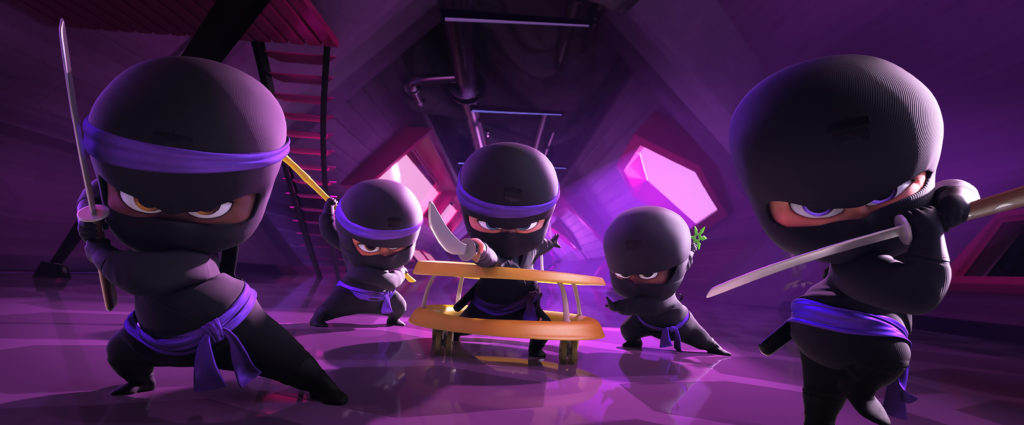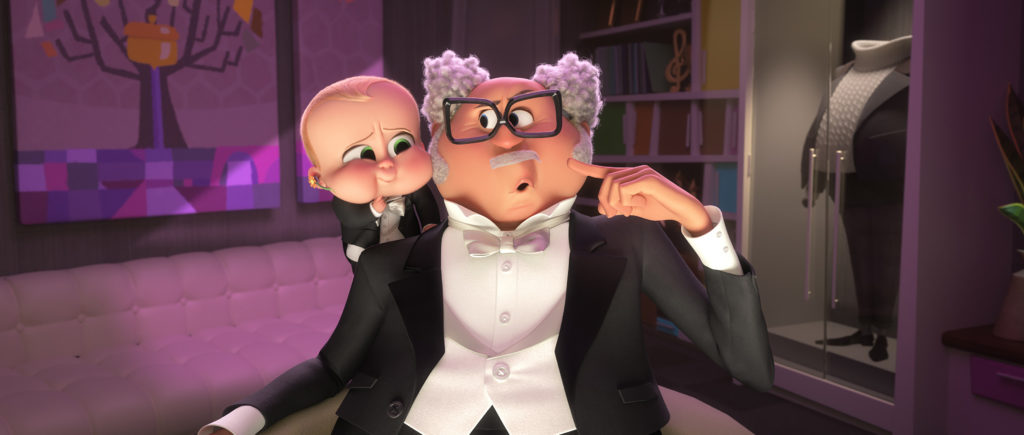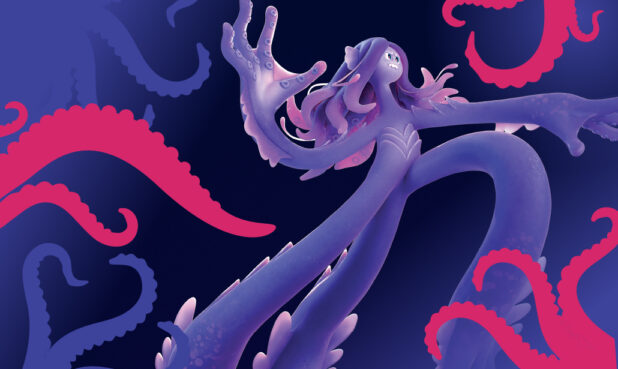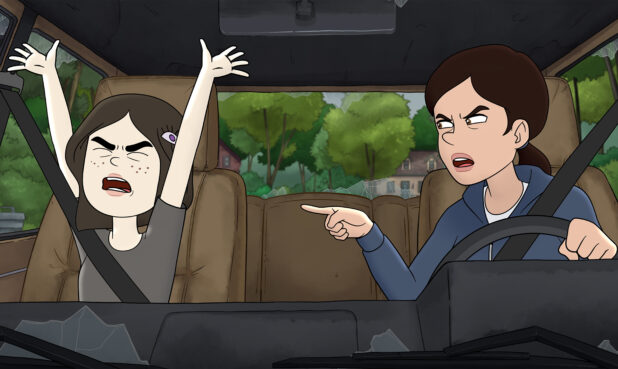
In the wake of the first DreamWorks movie and four Boss Baby seasons on TV, how did you make The Boss Baby: Back in Business fresh?
The original Boss Baby was meant to be a one-and-done. A cute story about sibling rivalry. Then the series happened. So when the studio approached us about making a sequel, it’s like, well, the TV series is the continuing adventures of them as children. What can we do? We started thinking about the end of our first movie. Tim as an adult telling his daughter how he and his brother had kind of grown to love each other as kids—a cautionary tale.
The baby at the end turning over and winking wasn’t really to set up a sequel as much as to tell kids, Baby Corp is real. All of this is real. It wasn’t just a kid’s imagination. That was the whole intention of that. But then, wouldn’t it be interesting if they were now adults? Wouldn’t if be a fun concept to have these brothers … [they’ve grown apart] … and they had to become kids again to go on this mission. To be a kid with your knowledge of what you know now has always been kind of a fantasy for people.
It just felt like, that’s an interesting angle … an ultimate truth: family is a lifelong drama that plays out. We all kind of get busy with our own worlds and stop picking up the phone for whatever reason, and you lose contact with your family. Wouldn’t it be a nice message if the story could say it’s never too late for families to reconnect?
Did the movie’s concept change from your original idea to the final version?
Tina [the new Boss Baby] had a smaller part in the first version of this. Then it seemed completely obvious that this was an opportunity for a strong female voice. Also, Tabitha [Tina’s older sister] was another strong opportunity. It just felt like, all right, the first movie was very boy-centric. This one has a lot of points of view. Let’s embrace that. Once Amy Sedaris came in [to play Tina], with her developing the character [we realized], okay, this is a very important character, and her secret mission, really, is not just to save the world, but bring the family back together. She became the centerpiece of the story through our process of working.
Between the first movie and the sequel, did any new technology allow you to take your story to new levels?
There’s an intimacy to this movie that’s important … the subtlety of the acting, which required a lot of close-up photography. I think we do skin better now, we do eyes better now. That allows us to get in closer and stay longer on a close-up than we could [before] because the characters just wouldn’t hold up.
There’s that part of it for the intimacy, but in the broad comedy of it—growing up on Disney movies and Warner Bros. animation, when you do fast action … you always do multiple limbs and things like that to really sell the frenetic energy. So we developed this multi-lens system … like when an arm’s moving fast, we would have multiple arms that get more and more faded as they go. It’s an old trick of 2D that we finally figured out for 3D.
There’s a shorthand when you’re talking with animators from traditional roots. We want to make the computer do what we used to be able to do so easily. A paintbrush, in that regard, for the fantasy moments. We wanted these to feel as interesting as Make Mine Music or Fantasia or What’s Opera, Doc. To have these fantasy moments that really harken back to painted backgrounds. The challenge with that is we were also doing it in 3D, so we had to find ways of making it a painting but making it 3-dimensional.
What personal inspirations will we see in this movie?
[My brother and I] started making films when we were very young. He bought a Super 8 camera. We used to make these films and get all the neighbor kids together, and in the summer we’d project them on the neighbor’s big white house.
My brother at a very young age had a family with two kids early on, and he wasn’t able to pursue his filmmaking career. I was able to come to L.A. and get into animation. We kind of separated for a bit, then we came back together, and when we did, I was always jealous. I was so caught up in animation, I never made time to have a family. And he raised these beautiful kids, and he was always slightly envious of me because I got to make films. I think we had this mutual envy of each other that’s in the movie.
Then there’s a moment, early in the film, when Tim as a dad leans in to kiss his daughter goodnight. But she holds out her hand to shake his hand. I remember in junior high, I stopped kissing my father goodnight because I thought I was too old. A couple years later, my mom said, “You know, your dad really misses kissing you goodnight,” and I was like, “He does?” Every night, once she told me, I kissed him goodnight. I could see how happy that made him. That’s kind of infused in the film as a little bit of a runner in the father-daughter story.
What do you hope Boss Baby: Back in Business offers its audience?
My love for animation was going to the old films like Peter Pan in the theaters. I was just blown away by them. My personal goal is to try and be a child’s first movie, because I think it has a memorable impact on them, especially an animated movie.
